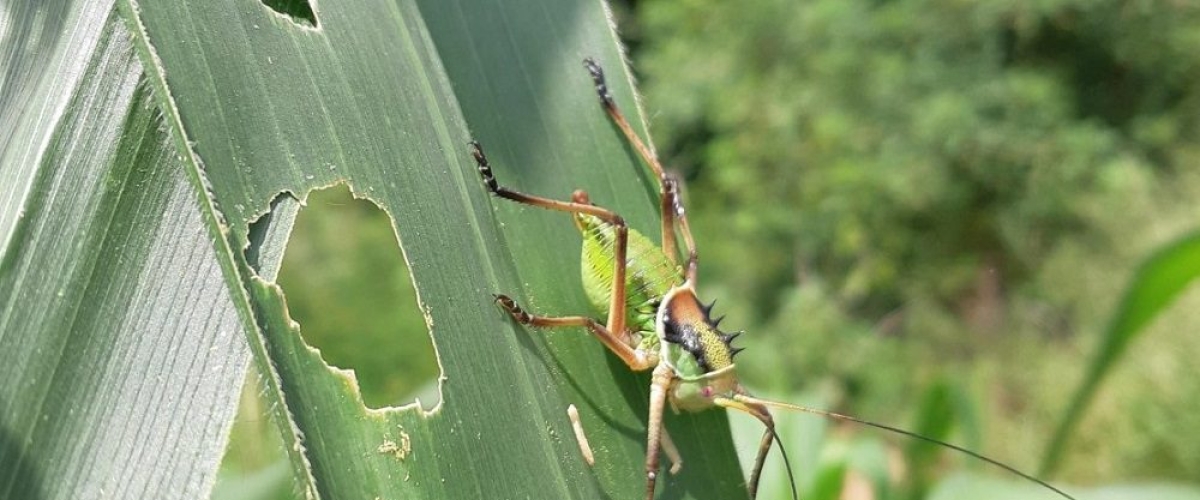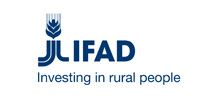
Photo: CABI
The armoured bush cricket (Acanthoplus discoidalis), an aggressive and highly destructive pest, has emerged as a serious threat to agriculture and food security across the Southern African Development Community (SADC) region. Known for its voracious appetite and resistance to common control methods, this pest has caused extensive damage to crops, undermining the livelihoods of smallholder farmers and challenging food systems. As the region faces increasing climate variability, coordinated action, knowledge sharing, and innovation are more critical than ever.
A Regional Threat: Countries Affected and Current Losses
In recent years, outbreaks of the armoured bush cricket have been reported in several SADC countries, including Zambia, Namibia, Botswana, South Africa, Angola, and Malawi. These pests are particularly destructive during dry spells, when they migrate in large numbers to find food, often targeting young crops.
- Zambia: In the Siavonga and Sinazongwe districts, farmers have reported up to 100% crop losses in key staples such as sorghum, millet, pumpkins, cowpeas, and cucumbers.
- Namibia: Infestations have led to yield losses ranging from 10% to 80%.
- Botswana and Angola: Field reports and farmer testimonies indicate increasing damage in areas with sandy soils and limited vegetation, where the pests breed easily.
The economic and food security implications are significant. In a region already grappling with the impacts of drought, floods, and rising input costs, such outbreaks further strain vulnerable communities and national food reserves.
Drivers of the Outbreak
Several factors contribute to the rising threat of armoured bush crickets:
- Climate Change: Erratic rainfall patterns and prolonged dry periods that create ideal breeding conditions.
- Deforestation and Land Use Changes: These reduce natural predators and increase suitable habitats for the pest.
- Weak Early Warning Systems: Limited access to timely information that hampers preventive action by farmers and extension officers.
Control Measures and Promising Solutions
Combating this pest requires integrated, context-specific strategies. Some promising practices and innovations include:
1. Baited Trench
Method Used effectively in Botswana and Namibia, this low-cost technique involves digging shallow trenches baited with food to trap crickets before they reach crops.
2. Community Surveillance and Reporting
Farmer-led scouting and real-time reporting systems help detect outbreaks early. Empowering communities to monitor pest movement increases response speed and accuracy.
3. Digital Tools and Forecasting
With support from development partners, Zambia’s Ministry of Agriculture and CABI developed a mobile-based digital surveillance tool for pest mapping, outbreak alerts, and localized management advice. This tool, now being scaled up, provides timely, actionable data to farmers and authorities.
4. Integrated Pest Management (IPM)
Sustainable strategies—including intercropping, maintaining vegetation buffers, and exploring biopesticide options—are gaining traction as eco-friendly solutions.
CCARDESA and FSRP: Promoting Knowledge Sharing and Preparedness
The Centre for Coordination of Agricultural Research and Development for Southern Africa (CCARDESA) plays a pivotal role in enhancing regional agricultural resilience through the World Bank funded Food Systems Resilience Programme (FSRP) for Eastern and Southern Africa. The Programme Development Objective (PrDO) is to increase the resilience of food systems and preparedness against food insecurity in the participating countries. Under this initiative, CCARDESA focuses on:
- Technical Support and Coordination: Providing technical backstopping and coordinating the development of climate and pest information systems across member states.
- Dissemination of Innovations: Promoting the adoption of climate-adapted agricultural technologies and sustainable pest management practices through regional research centers.
- Policy Harmonization: Assisting in aligning national policies with regional frameworks to facilitate effective responses to agricultural shocks.
- Information Sharing Platforms: Developing platforms for stakeholders to access and exchange information, thereby enhancing preparedness and response strategies.
Key take-away
The escalating threat of the armoured bush cricket necessitates a concerted effort combining innovative technologies, sustainable practices, and regional collaboration. By leveraging digital tools, adopting integrated pest management strategies, and fostering knowledge sharing through initiatives like CCARDESA's FSRP, Southern Africa can bolster its agricultural resilience and safeguard food security for its communities.
References





